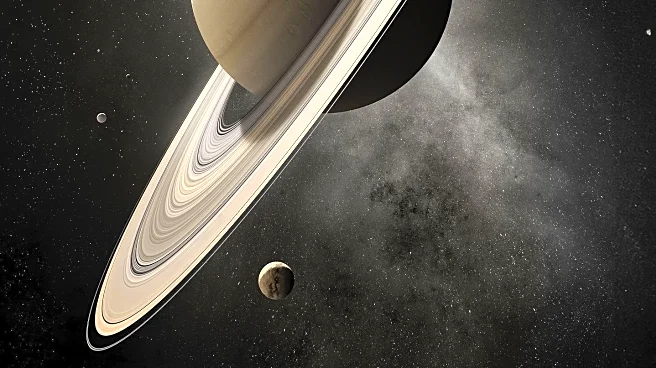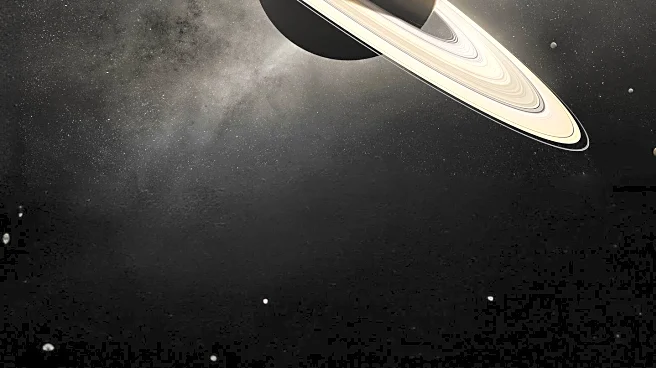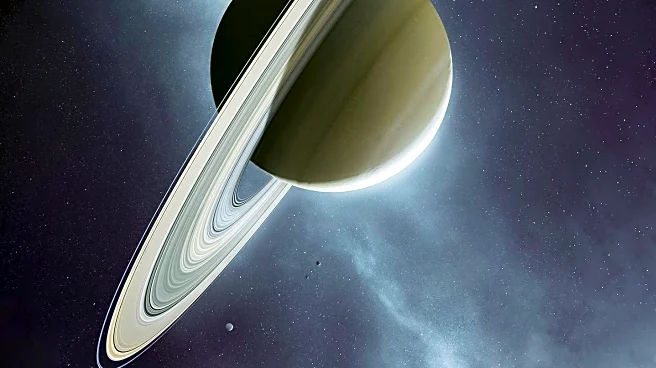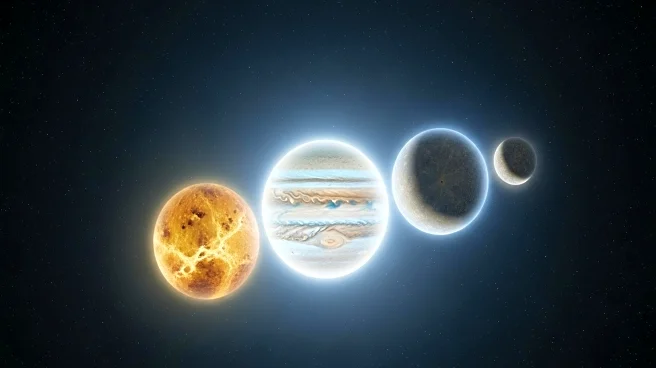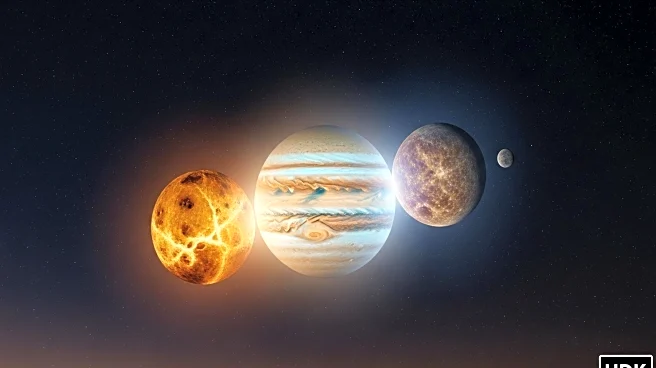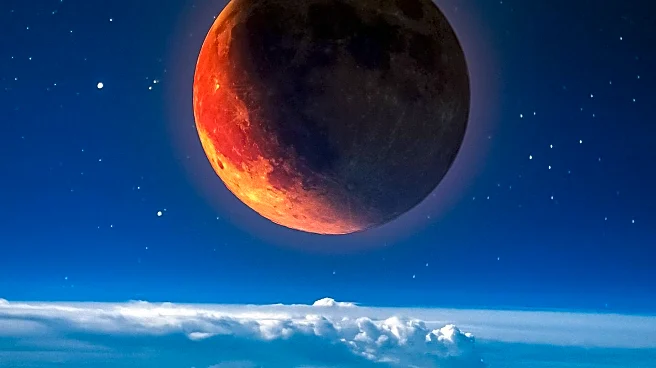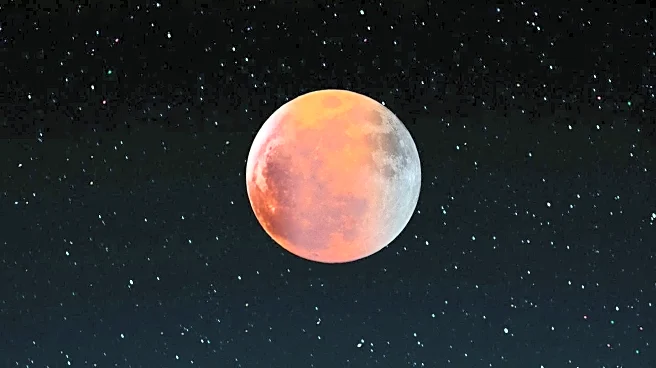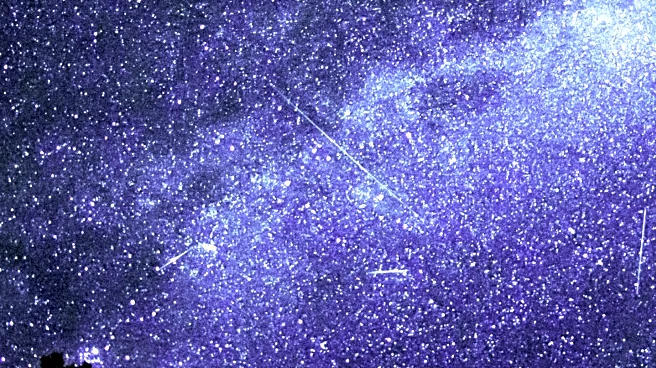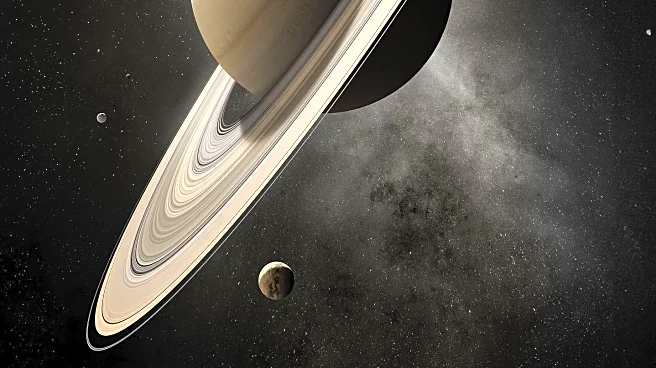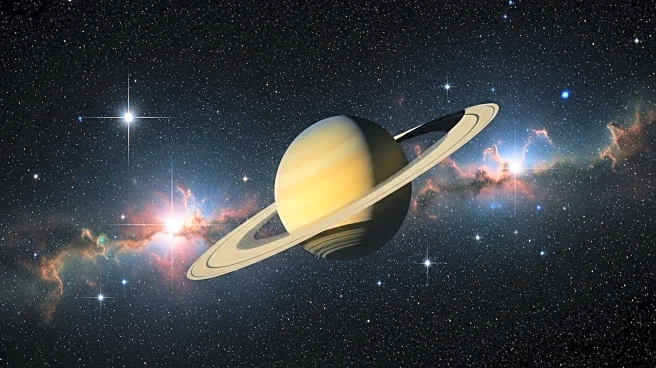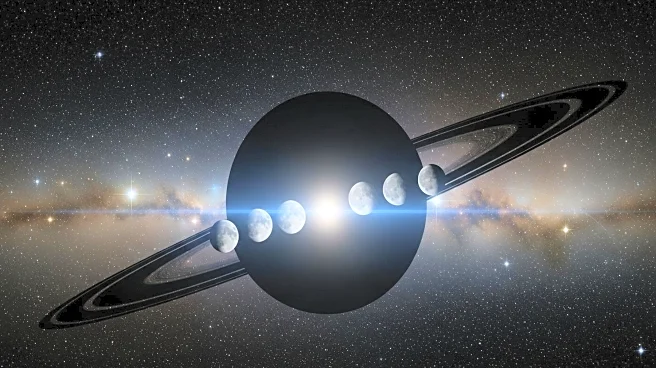What's Happening?
Sky watchers in Central Wisconsin are set to experience a week of remarkable planetary displays, including Saturn, Venus, and Uranus. Saturn rises in the east after sunset, with its moon Iapetus reaching its greatest western elongation, making it visible with a telescope. Venus appears in the early morning sky near the Beehive Cluster, offering a stunning view through binoculars. Additionally, the waxing gibbous Moon will pass by Antares in the evening sky. The week also features opportunities to observe Delta Cephei, a variable star in Cepheus, and Mercury's close pairing with Regulus before dawn. The Great Square of Pegasus will be visible, providing a guide to autumn skies.
Why It's Important?
This celestial event offers an opportunity for amateur astronomers and sky enthusiasts to observe and learn about planetary movements and star formations. The visibility of Saturn's moons and Venus near the Beehive Cluster provides educational insights into the dynamics of our solar system. Observing Delta Cephei can deepen understanding of variable stars and their role in astronomical discoveries. These events foster interest in astronomy and science, encouraging educational activities and community engagement. The alignment of planets and stars serves as a reminder of the vastness and complexity of the universe, inspiring curiosity and exploration.
What's Next?
Sky watchers can prepare for the upcoming celestial events by ensuring access to telescopes or binoculars for optimal viewing. Astronomy clubs and educational institutions may organize events or workshops to guide enthusiasts in observing these phenomena. As the Moon wanes, darker skies will allow for better visibility of fainter celestial objects, offering further opportunities for exploration. Continued interest in astronomy could lead to increased participation in related activities and discussions about the significance of these cosmic events.
